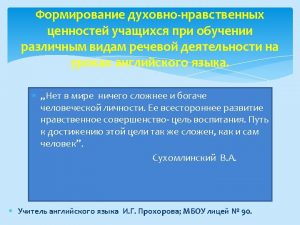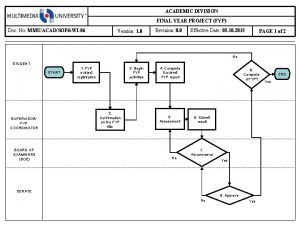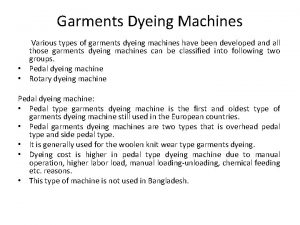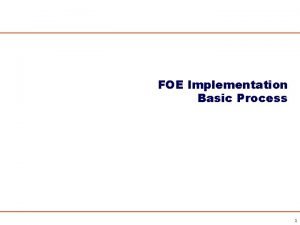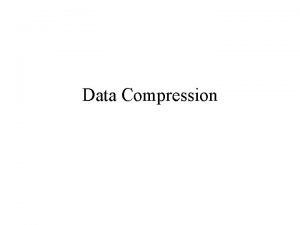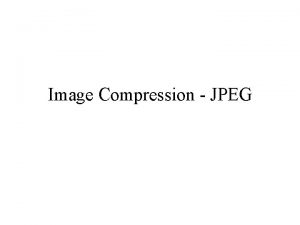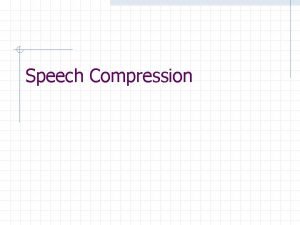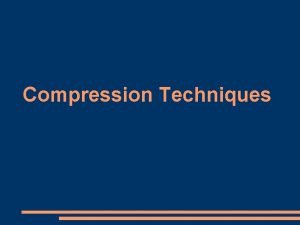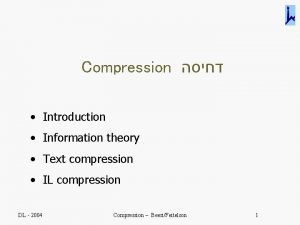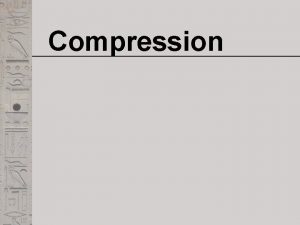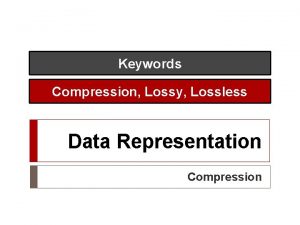Compression Garments for Lipoedema Patients Friend or Foe






















- Slides: 22

Compression Garments for Lipoedema Patients. Friend or Foe? Denise Hardy; RGN BSc (Hons) Nurse Consultant - Kendal Lymphology Centre Nurse Advisor – LSN & Lipoedema. UK

Compression for Lipoedema Introduction Definition of Lipoedema is an abnormal accumulation of subcutaneous fat, mainly affecting the lower extremities and almost exclusively affecting women. It is often compounded by obesity, sometimes oedema and presents with obvious disproportion between the upper/lower parts of the body. Pain (tenderness of the tissues) and bruising are common. Use of Compression for Lipoedema Compression for lipoedema patients is a very contentious – there is very little evidence/research to support its use and patients (and HCP’s) frequently describe the difficulties/frustrations they have obtaining/using/fitting garments.

Lipoedema. UK Big Survey 2012 -2013: 250 respondents


The Lipoedema UK Survey 2018 (The Use of Compression & Liposuction in the Management of Lipoedema) Questions included the demographics/background of patients and how lipoedema had affected them in general – as well as specifics around: Who prescribed/measured the garments The types of garments recommended How easy it was to get them dispensed Information given on fitting them How the compression was used How effective it was How quality of life was affected The types of garment used after Liposuction (if applicable) was also explored, as well as comments, suggestions, and challenges.

The Lipoedema UK Survey 2018 Demographics: 428 Respondents world 328 (76%) from the UK wide; 250 within 48 hours 41 (10%) from the USA 18 (4%) from Australia 18 (4%) From Netherlands 23 (6%) Other countries Age at Diagnosis: 11 -18 yrs 1% 19 – 25 yrs 5% 26 - 40 yrs 26% 41 -50 27% 51 -60 25% 61+ 16%

Who prescribed the garments? Diagnosis was made predominantly by: Lymphoedema Clinics (29%) Private Consultant (20%) GP’s (10%) Also by surgeons, vascular consultants, dermatologist 17% admitted self diagnosis Who Actually Measured For them? 68% were measured by the lymphoedema clinic 15% by Lip. UK Nurse Consultants 11% by MLD Therapists 5% were measured by a practice nurse

Stage of Disease Majority of patients (93%)described their Lipoedema as Moderate to Severe Further questioning determined that 32% had been diagnosed with lymphoedema secondary to lipoedema (Often known as lipolymphoedema) and the group most likely to reduce/improve with compression garments

Impact Lipoedema Has on Quality of Life As predicted, the lipoedema had a significant impact on quality of life and activities of daily living

The types and class of garments recommended Range of styles offered – predominantly tights/leggings for those with made to measure garments

Problems patient experience with garments It took over a year and several different failed attempts before compression garments that fit me properly were achieved. I persisted, and my young/inexperienced lymphoedema clinic practitioner listened to me (& took advice from the company that makes the garments) Thank goodness - I am very grateful for that. I use a set of braces to keep them up and I still can't keep them from falling down. First item felt good. Subsequent orders were not the same (though my nurse asked for them to be so. ) They were reordered several times and out of five garments, two were good, one OK and two completely unsuitable - completely the wrong size! Apparently due to manufacturer reorder problems. Five times to get 3 wearable pairs! The lymphedema clinic wants me in class 3 garments I can barely cope with class 2 and they're uncomfortable as hell - I feel like a sausage stuffed into too little skin : / Languishing at the bottom of the wardrobe!

How easy it was to get them dispensed? Although a number said they had no problems, over 44% of respondents commented on: • The length of time to receive the garments (weeks to months on occasions) • Incorrect style, strengths, colours etc dispensed • Long wait to get errors sorted • Garment not as prescribed – e. g. bands missing; open rather than closed toe; thigh-highs not tights • Problems with confusing codes – pharmacy/surgery struggling to find correct garments required • Received garments not fitting correctly (e. g. too tight, unable to get on, rolling down)

Information given on fitting them 88% of patients seen in lymphoedema clinics were given instructions on how to use/apply/remove or care for the garments. The remaining 12% used the manufacturers instructions, the internet, friends/family

How the compression was used A great improvement over the first Big Survey where only 37% of patients wore garments everyday. Once patients are able to get the garments on, many find the garments actually improve the pain they experience

How effective the compression was (Size reduction) Compression is only likely to improve the size (volume) of the limbs, if there is a fluid component to the swelling (those patients with lymphoedema secondary to lipoedema and/or obesity However they can help to: • To improve blood and lymphatic flow and prevent fluid retention • Help support the loose connective tissue (less ‘floppy/pendulous’) and thereby enhances mobility • Reduce discomfort, pain and tenderness • Protect the limbs • Improve the cosmetic appearance of the limbs – helps to define/reshape/streamline Many quotes from the survey support the above comments

Has Compression Therapy Helped Improve Overall Quality Of Life? 78% of respondents felt that Qo. L had improved: 39% felt it was effective/very effective 39% felt it had been slightly effective

Many negative comments about compression, but many positive too………. “My legs feel lighter and do not swell up. It’s hard to describe. I’m so used to wearing them all the time now, that they feel normal, and NOT wearing them is easier to describe. Without them my legs feel heavy, swollen, tender, painful, ‘loose’, ugly, vulnerable, and above all TIRED. I could not carry out my usual walking and day to day pursuits without wearing the tights" 78% of respondents felt that Qo. L had improved

The types of garment used after Liposuction (if applicable) was also explored A selection of garments were used post liposuction ranging from ‘below knee’ to tights with full compression, to wraps. 13% of patients seen in clinics had surgery, 11% were awaiting surgery, 10% had pursued funding – but were refused 27% were prescribed by the surgeon 27% by the surgeons nurse 5% sourced their own garments 5% not prescribed at all

The Challenges Patients Face – and the Patient Wish List (Q 23/24) CHALLENGES: • Toileting – pulling up tights – especially in hot weather • Keeping garments up • Stop them rolling/slipping/creasing – especially at the knee/ankle joints which is so painful WISH LIST • For fabric to be breathable – especially during exercise/hot weather • Smooth fitting • To be given more supplies – and the chance to try new products without using up NHS allocation • Ease of application/removal • Larger sizes - and shorter slengths off the shelf (Rt. W) • Larger/better fitting leggings with smaller, shorter waist • More choice of colour/styles/fabrics

What have we learnt from this Survey? In the 5 years since the initial Big Survey – there appear to have been substantial improvements in the provision and use of compression garments for lipoedema patients. If it is worn more often, it seems to help relieve the pain associated with the condition (IF THEY ARE A GOOD FIT), and can help to improve activities of daily living and quality of life considerably (particularly in the earlier stages of the disease) Patients require support, encouragement (physical/psychological) to use compression appropriately & effectively & need encouragement/peer support to commit to using/wearing it on a daily basis Majority of patients use a variety of flat/circular knitted products (Mt. M and Rt. W) in classes l & ll – and achieve reduction in size (and improved shape) if there is a secondary oedema present This presentation focussed on the patients of the survey who were seen in a lymphoedema service or by an experienced practitioner - however, there are many patients who are unable to access such help – and as a result are unable to obtain good fitting garments leading to regression of the disease and a poor quality

Further suggestions/recommendations A gap in terms of products and technologies? • Sizing for this group of patients is very difficult with the products available (e. g. far too small in the Rt. W range) • The current products are adapted from those within the venous/lymphology field – the need to develop condition specific garments fit for purpose is required • Improved yarns/fabrics – the fabrics used in sport/outdoor is an option – durable, long-lasting, consistent, and breathable ‘support’ – particularly for early stage lipoedema • Comfortable to wear • More fashionable • Lighter-weight fabric offering flexibility and facilitating movement Plus Further Education: • For HCP’s in measuring/adapting compression currently available • For dispensing surgeries/pharmacies on prescribing compression garments

Thank You For Your Attention ………. . And to Sharie Fetzer and Lipoedema. UK for their on-going work/dedication to improve the care and support offered to this group of patients so often neglected/ignored.
 Hello the sun is shining
Hello the sun is shining Hello my future
Hello my future Friend or foe chapter 2
Friend or foe chapter 2 Friend or foe station lab answers
Friend or foe station lab answers Friend or foe? (game show)
Friend or foe? (game show) Foaf friend of a friend
Foaf friend of a friend A friend in needs a friend indeed
A friend in needs a friend indeed I've found a friend oh such a friend
I've found a friend oh such a friend Let's be a good friends
Let's be a good friends Foe by jm coetzee summary
Foe by jm coetzee summary Foe mmu
Foe mmu Cannons overcharged with double cracks
Cannons overcharged with double cracks Golden crops foe
Golden crops foe Psyici
Psyici Foe joe
Foe joe Calcolatore foe
Calcolatore foe Mmu fyp
Mmu fyp Birth of shaka
Birth of shaka Ontariocourtdates
Ontariocourtdates Statua di zeus foe
Statua di zeus foe Natalie attire makes fashionable garments
Natalie attire makes fashionable garments Ripon knitwear ltd
Ripon knitwear ltd Which line creates a feeling of height and formality?
Which line creates a feeling of height and formality?






